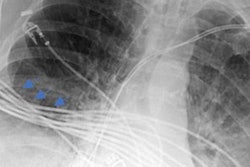
Department-level strategies aimed toward reducing burnout among radiologists aren't leading to measurable improvements in their wellbeing, suggests a study published August 5 in Academic Radiology.
A team led by Dr. Ivan Ip from Brigham and Women's Hospital in Boston found that self-reported burnout worsened or remained unchanged over time despite initiatives by radiology departments that intended to improve culture, workplace efficiency, work-life balance, and personal wellness.
"Physician and employee wellness embedded into institutional culture may be more effective than departmental improvement initiatives," Ip and co-authors wrote.
Physician burnout, characterized by exhaustion, depersonalization, and a sense of reduced personal accomplishment, persists in the medical field. Previous studies suggest that burnout can lead to lower quality patient care, higher risk for medical errors, and overall increased staff turnover.
Over one-third of radiologists report experiencing burnout. Despite recommendations from professional organizations, there is a lack of data showing whether interventions implemented by departments reduce burnout among radiologists.
Previous research shows that compared to nonradiologist colleagues, radiologists were less likely to find work meaningful. They were also more likely to feel unhappy and undervalued in the workplace and by leadership.
Ip and colleagues wanted to compare self-reported burnout among radiologists in a single academic medical center before and after initiatives were implemented by the radiology department to improve wellbeing and professional satisfaction. Some of the initiatives included the following:
- Hosting team-building and social wellness events like wine and cheese parties
- A pilot program to train senior radiologic technologists to help with CT and MRI protocols
- At-the-elbow training for use of electronic medical records
- Having more medical assistants
- Capping work days at nine hours as policy
- Disseminating mental health resources
- An additional week of vacation
- Monthly lunches with hospital leadership
To assess how well the initiatives worked, the researchers used two survey rounds, one from 2017 (before initiatives) and the other from 2019 (after initiatives).
The researchers looked at prospective survey data from a total of 153 radiology faculty members from the first survey round and 120 faculty members from the second survey round.
The study authors found that rather than seeing an improvement in burnout levels, radiology faculty saw declines in important components recognized to be contributors to burnout (all data were statistically significant):
- Reduced organizational/personal values alignment
- Lower professional fulfillment
- Higher emotional exhaustion
- Increased sleep-related impairment
The researchers reported no statistically significant differences tied to interpersonal disengagement, self-compassion, negative impact of work on personal relationships, and perceived supervisory leadership. All p-values in these areas were above the 0.05 threshold.
The authors suggested that several factors may have influenced their findings. One is that there was a departmental emphasis on increasing productivity over the course of the study in response to continued growth in radiology services.
"In addition, our institution was part of a large clinical integration across our health system, in which clinical radiology workflows were changing which caused some disruptions in clinical practice," they wrote.
They added that leadership lunches and social events with leadership were "poorly attended" throughout the study period. While the institution's personal wellbeing interventions were better attended, the researchers noted that they did not lead to better burnout and wellness scores.
"More effective ways to engage faculty with leadership and strengthen relationships need to be sought," they wrote. "Furthermore, recent studies have found early career physicians may have different needs and priorities than established radiologists. Thus, more targeted initiatives may be more suitable for specific groups of faculty members."



















